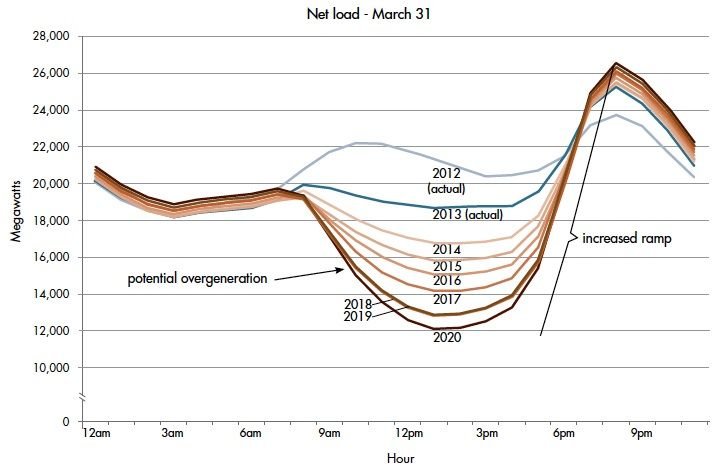Solar Generation and the Grid’s Duck Issue
As part of our ongoing support for EIA and other government agencies, OnLocation has been studying the potential impact of large amounts of solar generation on grid stability as it relates to the National Energy Modeling System (NEMS). The issues stem from the timing of solar generation during the day, particularly in months when electricity demand is relatively low such as early spring before air conditioning is needed. The potential impact on the grid from the high solar generation on days with low electricity demand and the steep reduction in solar in the evening has been dubbed the “duck” issue by the California ISO and was described in a recent post by the Energy Institute at Haas.

The solar issue presents unique challenges in NEMS and other policy models. As the cost projections for solar continue to decline, some recent model scenarios predict large amounts of solar capacity in future years. However, the aggregate nature of NEMS, as well as the way the load slices are defined, masks the potential impact of this wave of solar generation on the grid. In these low PV cost scenarios, the model is unable to recognize the need to curtail some of the solar generation during hours when load requirements cannot absorb the generation while maintaining adequate baseload capacity that can be used when generation declines rapidly at dusk. This model formulation results in an overvaluation of solar generation because the potential reduction in revenue for generators during curtailment periods is not addressed. Other electricity policy models likely have similar issues due to the need to represent loads in an aggregate manner and the increasing amount of renewable energy on the electricity system.
OnLocation is working closely with its clients to improve the model’s ability to address the “duck” issue. Renewable integration topics such as this will be discussed as part of the 2016 EIA Energy Conference to be held in July.
Contact us to learn about the NEMS model and how OnLocation can help you explore issues related to the potential role of renewables in energy markets.

